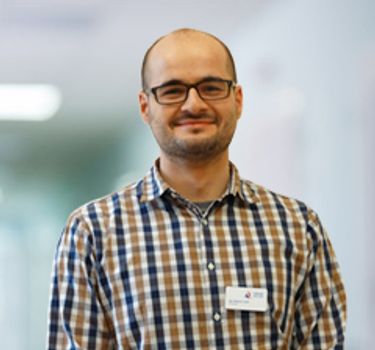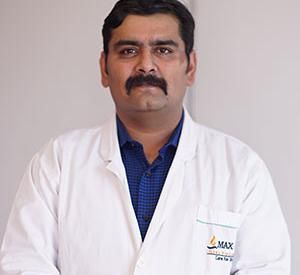Complex Orthopedic Treatments: Limb Lengthening Surgery

As the name suggests, Height increasing surgery or limb-lengthening surgery both are self-explanatory. It is a surgical procedure that helps in increasing the size of the bone, that can be used for treating congenital deformities or for cosmetic purposes to increase the height of the patient.
During this procedure, a bone is strategically cut and gradually distracted (is pulled apart), that leads to the formation of a new bone (osteogenesis) at the point which has been lengthened. This technique is mostly used for correcting LLDs (limb length discrepancies) in both children as well as adults, that may arise because of congenital defects, injuries or diseases.
It is also effective in correcting other joint deformities, making hip bone corrections and other complex problems that are concerned with scar tissue damage which restricts normal limb movement and function. This is a very complex procedure which should only be performed by a highly trained orthopaedic surgeon with experience and extensive knowledge in correcting LLDs using a wide range of techniques including Taylor Spatial Frames, intramedullary nailing techniques, and Ilizarov.
This article focuses on educating readers about height increasing surgery while discussing the concerns and techniques involved in it that are used in India. To gain a better understanding of the procedure, we also questioned Dr Amite Pankaj Aggarwal, the director & Unit Head of Orthopedics Department at Fortis Hospital, Shalimar Bagh, who often deals with such cases.
Concerns and Risk involved in Limb-Lengthening Surgery
“There are a certain set of patients who need height increase, but on a routine basis, if you want to increase one or two cm for a cosmetic purpose, this limb lengthening surgery is not usually recommended. But if you want to correct one bone which is very short, or if he/she has achondroplasia (is very short), their height can be increased. The height can be increased one or two inches, but as the procedure is very complex we don’t recommend patients to undergo it for cosmetic purposes,” said Dr Amite Pankaj Aggarwal, the director & Unit Head of Orthopedics Department at Fortis Hospital, Shalimar Bagh.
While lengthening the patient’s limb & correcting their deformed limb is the sole purpose of the procedure, it is also being used for cosmetic reasons.
Osteogenesis
The fundamental approach used in this treatment surrounds around osteogenesis. Osteogenesis is the process of formation or development of new bone, which is exactly what happens during this process. The bones are pulled apart, and then an Ilizarov apparatus is inserted on the limb that needs to be lengthened. With each passing day, the bones are pulled further (0.5mm-1mm each day), and the cells start developing in between the stretched portion. The apparatus helps in keeping the bone in place ensuring that osteogenesis takes place in the right position.
On average, 5 cm of bone length can be increased in most patients. However, over time the muscles can get stretched and joints can become tightened or stiffed. Lengthening should be stopped under these circumstances else it can cause major health issues for the patients.
Type of Implants
Techniques
A variety of devices are available in the market which can be used for accomplishing controlled bone distraction. They can be categorized into internal and external fixators. A series of pins, wires and rings are used for attaching the External fixators to the bone outside the body while internal implants are fixed inside the body in the bone marrow cavity. Additionally, certain cases might require other approaches that might not utilize distraction concept. A combination of internal and external fixators, like "Lengthening over Nail" can also be used in some cases.
Implants used in India (Ilizarov)
Performing height increasing surgery using Ilizarov is a popular technique. “These implants are a type of fixators”. Ilizarov apparatus has wires which go inside the bones that are supported by rings used for making adjustments to the bone for its lengthening.
Ilizarov is an external fixation used for reshaping and lengthening the bones. It is made from titanium or stainless steel rings that are fixed on the bones using Kirshner wires (stainless heavy-gauge wires).
The rings of the implant are connected with each-other with rods that have adjustable nuts. Ilizarov apparatus’s tensioned wires and circular construction offer better structural support compared to monoliteral fixator system, delivering weight-bearing abilities.
How it Works
In the procedure, either leg or thigh bone is cut, and an Ilizarov is fixed on them separately that are used for creating distance between the two parts in small measures each day. The new bone develops in this gap created every day.
“It is a long procedure; patient can increase 1mm height per day. And the implant has to stay for the same duration. So, if you want increase 3cm in a month, that is 1 inch it will take 3 months and if 8-9 cm needs to be increased the implant will stay for 6 months,” the doctor adding talking about the procedure which is delivered at Fortis Hospital, New Delhi.
Limb lengthening techniques use the body's natural ability to heal through the regeneration of soft tissues and bones (example: muscles, skin, nerves, blood vessels, etc.). It involves distraction osteogenesis in which seperated bones are gradually pulled apart (causing distraction), enabling the new bone to grow (osteogenesis) in the newly created gap. Over time the new bone becomes harder and merges with the pulled bones.
Step by Step process of Height Increasing Surgery
Step 1: The bone that needs to be lengthened is cracked via small incisions made by the surgeon.
Step 2: The limb will be stabilized using either an internal or external fixation (Ilizarov) device.
Step 3: Patients usually require a hospital stay of four or five days. Their physical therapy is started 24 hours after the surgery. It is essential for patients to maintain joint mobility during the distraction and the process of bone lengthening which is started five to ten days after the operation.
Step 4: During the distraction phase, the cut made in the bone is slowly pulled apart by using the adjustments on the fixator. The space between these bones is covered with new bone which is generated by the body naturally.
Step 5: During the lengthening phase, patients will be examined and undergo X-ray scans every week for evaluating the bone& muscle growthand nerve function and also for examining the pin sites for any infection.
Step 6: After the bone has grown up to the desired length and a straightened limb structure is constructed, the process of making adjustments will be stopped. This duration is referred to as the consolidation phase, in which the fixator is still kept on the patient's limb allowing the new bone to mature and harden.
Step 7: Patient’s bone will be examined, and checked if it has completely healed with X-rays, and based on the results the fixation device will be removed. The procedure for fixator removal will be performed under general anesthesia.
Preventive measures can be taken, and a brace or cast can be placed on the leg after removing the fixator, to ensure that the bone gets the required support. The cast can be removed after the recommended days by their orthopaedic surgeon.
Note: The duration of time, fixator needs to stay attached to the limb will depend upon how much bone length a patient desires to grow. Usually, fixator can help increase 1 centimeter per month in children and requires double time for adults. This is because children develop new bones faster than adults. The time includes both phases of bone distraction (Osteogenesis) and consolidation phases.
How does a patient make adjustments in the fixator?
Every day the distance between the bones is increased from 0.5mm to 1mm. After getting discharged from the hospital, the patient has to make these adjustments on his/her own and is trained in advance. Patients use the pins on the fixator for making the gaps. It usually takes 10 or more days for 1 cm of bone to grow and almost double time to get strong.
Conditions that can be Treated using Ilizarov Apparatus
External fixation can be used for correcting limb length deformities and discrepancies with different causes like:
Trauma: malunion (condition in which the bones heal crookedly), Growth plate fractures, nonunion (condition in which the bone don’t heal completely), bone loss due to deformity.
Congenital limb length defects: These conditions are caused because of birth defects or deformities which include short femur, pseudarthrosis, fibular hemimelia, and hemi-atrophy.
Short Height/ Stature: It includes achondroplasia or other skeletal dysplasia. External fixators can treat limb length discrepancies associated with dwarfism. In some cases, treatment may also help patients function more independently.
Bone Infection: developed in the joints (septic arthritis) and osteomyelitis. Bone infection removes bone segments that can result in causing angular deformities or limb length discrepancies.
Growth & Developmental causes: involve slow growth or limb deformities developed because of conditions like Blount's Disease, that interfere with bone development making the adolescents and toddlers to become overweight.
Pediatric hip disorders: Use of external fixators is effective in treating pediatric hip disorders like DCV (Developmental Coxa Vara), SCFE (Slipped Capital Femoral Epiphyses) and Perthes disease.
Joint stiffness: may occur following an infection or injury, which can in some cases addressed through controlled joint distraction (arthrodiastasis), using external fixators.
Scarring of Soft tissues: Gradual distraction technique can also address multiple surgeries for the correction of club foot or burns.
Stay
Bone lengthening surgery completes in 4 to 5 hours, but the real work starts after the operation. The implants will stay for a few months in the leg or thigh. The frames are created to provide patients with a certain sense of independence as they are able to walk small distances on their own.
The patient needs to be in the hospital for 5-6 days, and then the patients can maneuver their implants, as only nuts and bolts adjustments need to be made for it. Patients are trained by the doctor to adjust the implants properly. And then patients should visit the hospital every month or two for their checkup.
Limb Lengthening Surgery in India
Treatment Available at Fortis Hospital, Shalimar Bagh, New Delhi
Doctor: Dr (Prof) Amite Pankaj Aggarwal │ Director & Unit Head of Orthopedics & Arthroscopy Department
Cost of Height Increasing Surgery in India starts at USD 5000.
For further query regarding limb lengthening surgery contact Medmonks!





